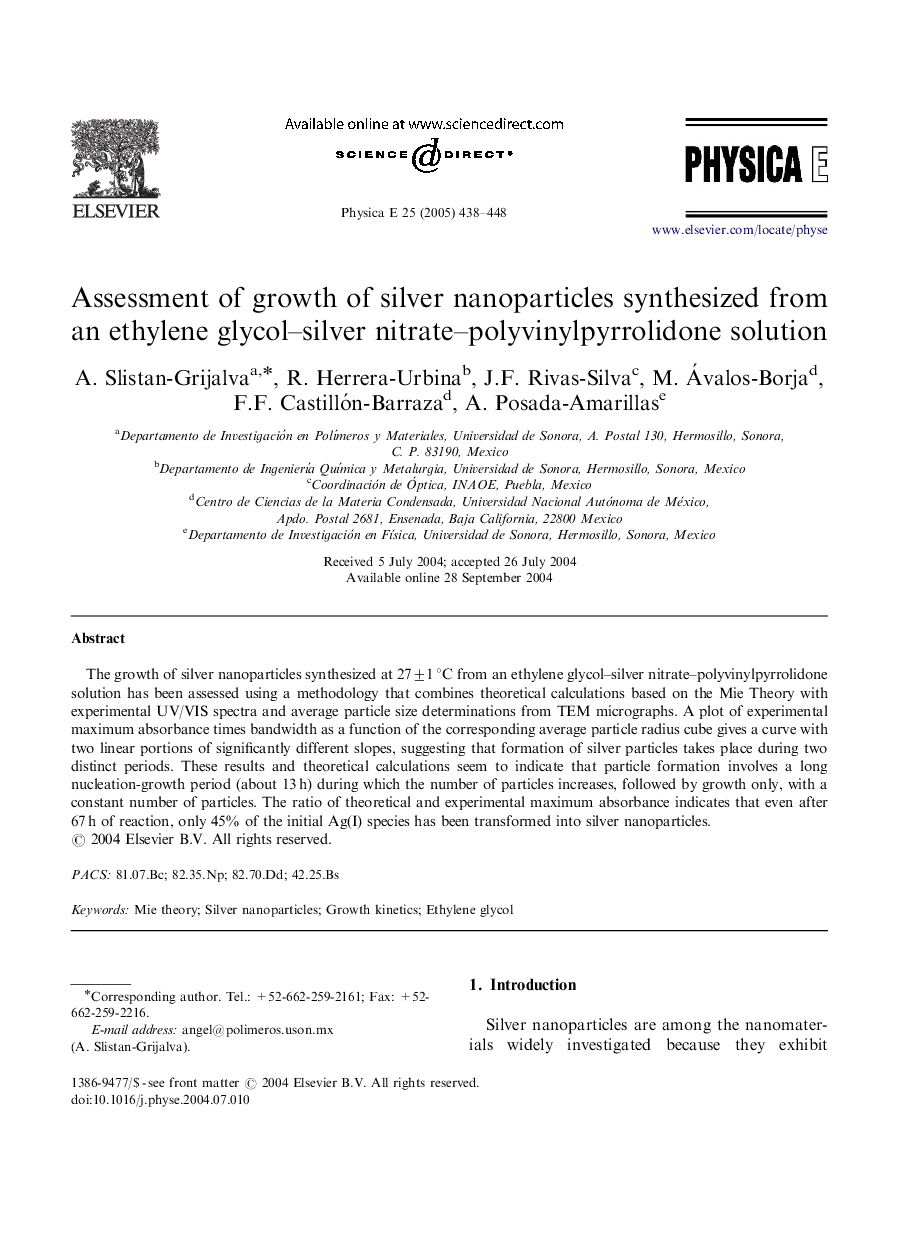| Article ID | Journal | Published Year | Pages | File Type |
|---|---|---|---|---|
| 10642344 | Physica E: Low-dimensional Systems and Nanostructures | 2005 | 11 Pages |
Abstract
The growth of silver nanoparticles synthesized at 27±1 °C from an ethylene glycol-silver nitrate-polyvinylpyrrolidone solution has been assessed using a methodology that combines theoretical calculations based on the Mie Theory with experimental UV/VIS spectra and average particle size determinations from TEM micrographs. A plot of experimental maximum absorbance times bandwidth as a function of the corresponding average particle radius cube gives a curve with two linear portions of significantly different slopes, suggesting that formation of silver particles takes place during two distinct periods. These results and theoretical calculations seem to indicate that particle formation involves a long nucleation-growth period (about 13 h) during which the number of particles increases, followed by growth only, with a constant number of particles. The ratio of theoretical and experimental maximum absorbance indicates that even after 67 h of reaction, only 45% of the initial Ag(I) species has been transformed into silver nanoparticles.
Keywords
Related Topics
Physical Sciences and Engineering
Materials Science
Electronic, Optical and Magnetic Materials
Authors
A. Slistan-Grijalva, R. Herrera-Urbina, J.F. Rivas-Silva, M. Ávalos-Borja, F.F. Castillón-Barraza, A. Posada-Amarillas,
